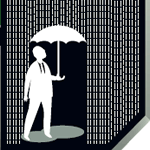A look at the enormity and interweaving of the problems and their causes.
Customizing college acceptance letters.
Commitment to inclusion and access drive recruitment.
How some schools are spending taxpayer's dollars.
Advancement success depends on being an effective CEO.
Want sophomores to stay? Send them away as freshmen.
An innovative program allows motivated high school students to get a head start on their college careers.
You don’t need to call your students ‘customers,’ but you do need to treat them that way.
Higher education marketing encourages some students to make decisions that don’t match their goals, aptitudes and finances.

For-profit schools have been in the spotlight lately and the news hasn't all been good, yet the University of Phoenix remains a bright spot. How do they do it and what can they teach other schools — even the nonprofit ones?
College and universities should carefully consider their business plans to achieve successful results for today's nontraditional student population.

It's time to take control of what you are spending on shipping costs. Since 2006, Baltimore County Public Schools (BCPS) has saved our taxpayers over $1 million negotiating our own transportation contracts.
Build and manage a strong image for your institution.